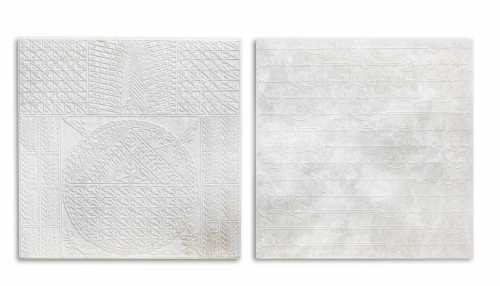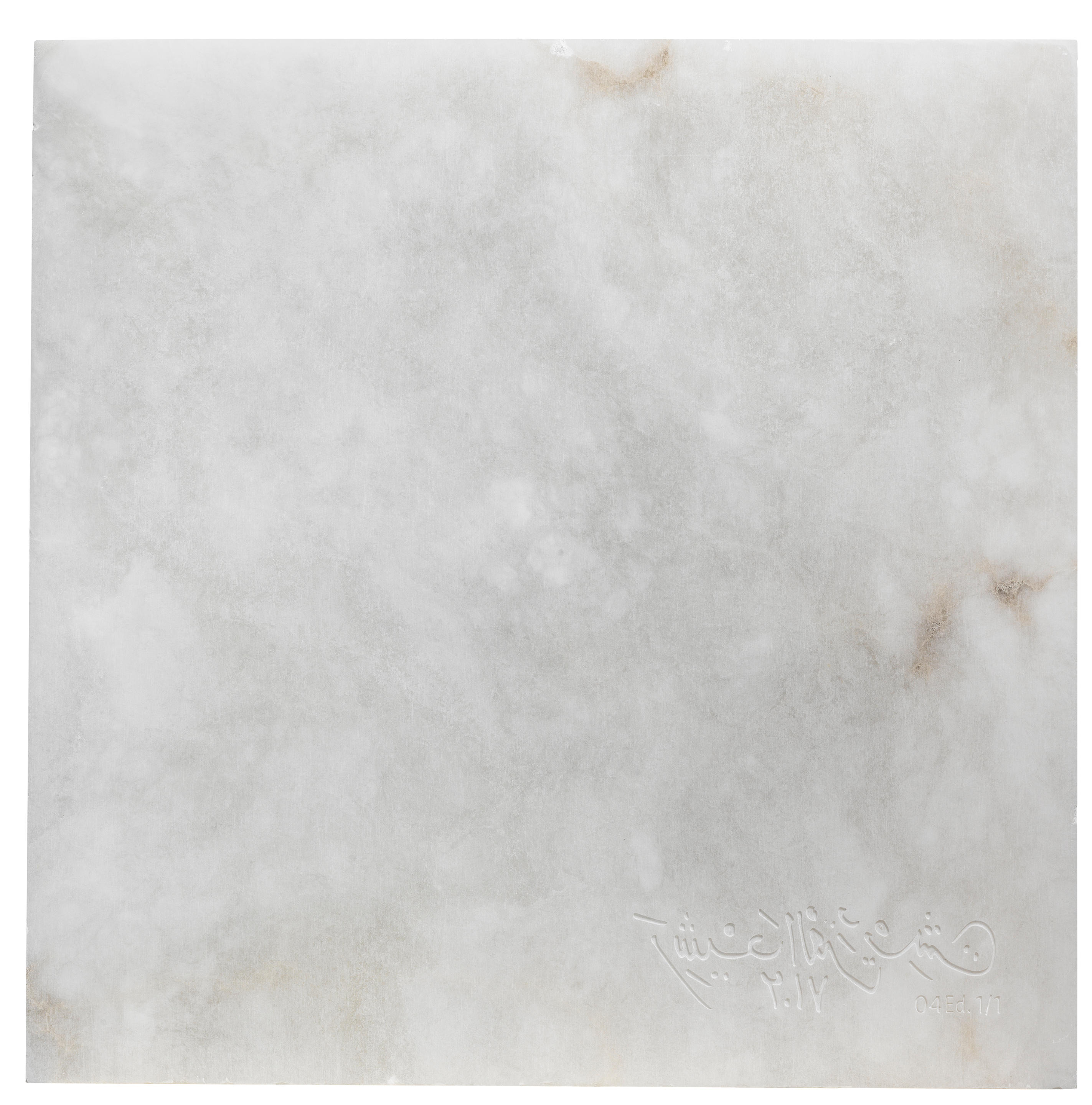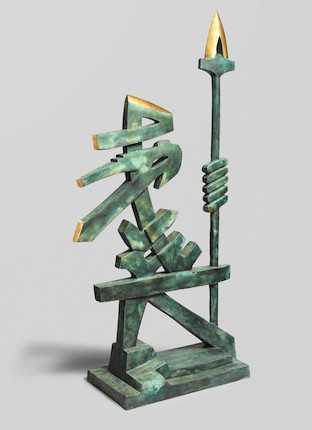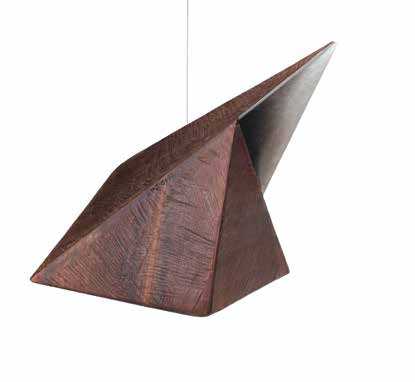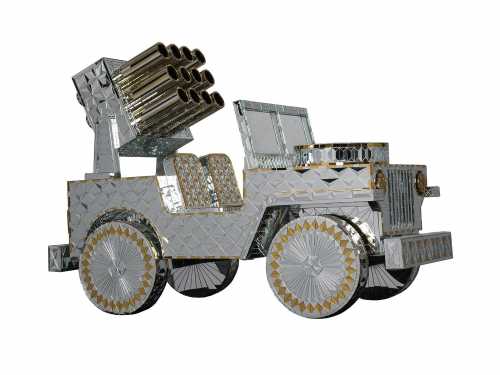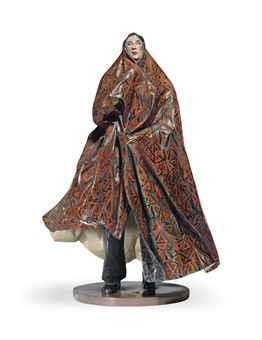- From the series "Les Sept Stations Célestes" 2017
- alabaster sculpture in two parts
- Sculpture
- 98 * 49 cm
- Editions: تک نسخه
- both panels signed "Rachid Koraichi", dated "2017" and inscribed "04.ED1/1" on verso in English and Arabic, executed in 2017
17 November 2021
Estimation
£8,000
11,027 USD
-
£12,000
16,540 USD
Realized Price
£21,500
29,635 USD
115%
Artwork Description
Rachid Koraïchi is an Algerian artist whose work deals with the intersections of religion, culture, and history. Sufism is largely infused into his pieces that evoke themes of transcendence, spirituality and the connection to oneself and the divine. His work grapples with the multitude of ways that we connect ourselves with God and higher realms, and thus he deploys a multitude of different mediums: from alabaster tablets like we see in this lot, to threadwork, to bronze. Likewise, he is an artist of many forms: part ceramist, sculptor, print-maker, and all around visionary.
Rachid Koraïchi's use of multiple mediums creates a fluidity that allows him to explore different historical, artistic and theoretical facets. In this particular artwork we see two exquisite alabaster tablets paired with Islamic calligraphy and design, weighing approximately 35 pounds each. The sculpted tablets draw references to key Islamic iconography, including the 'Alabaster Mosque' in Cairo.
With a career spanning five decades, Rachid Koraïchi is a world-renowned artist with exhibitions that have been featured in the Venice Biennale, the MOMA, the inaugural exhibition at the Guggenheim in Abu Dhabi in 2015, and in the collection of the National Museum of African Art in Washington D.C. Koraïchi works in Paris with major projects in Algeria, Egypt, Spain, Tunisia, USA and Dagestan. Koraïchi won the prestigious Jameel prize in 2011, has been featured in 'The Future of Tradition', Haus der Kunst Munich 2010, and presented in 'Word into Art' at the British Museum, 2006.
In this particular artwork we can appreciate his visual interpretation (left side) in comparison to the text (right side) in which he defines his posture as to how love should be portrayed to the ones surrounding us and Allah - " Love does not own, and does not compare." We are able to appreciate the dynamic and visual representation that Koraïchi has created based on the Chinese, Sumerian, Hebrew and Arabic alphabets accompanied by numbers, codes and drawings, the "alphabet of memory" as he calls it.
More lots by Rachid Koraïchi

The Path of Roses
Estimation
£100,000
133,333 USD
-
£150,000
200,000 USD
Sale Date
Christie's
-
11 November 2025
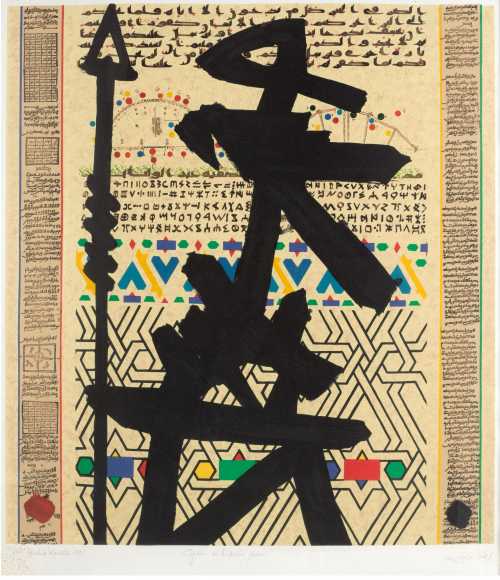
Guardian of the Bitter Season
Estimation
€800
894 USD
-
€1,200
1,341 USD
Realized Price
€1,216
1,359 USD
21.6%
Sell at
Sale Date
Bonhams
-
26 September 2024
Realized Price
27,983 USD
Min Estimate
12,682 USD
Max Estimate
17,928 USD
Average Artwork Worth
+76.293%
Average Growth of Artwork Worth
Sales Performance Against Estimates
Average & Median Sold Lot Value
2020 - 2024
Performance vs. Estimate
2020 - 2024
Sell-through Rate
2020 - 2024
